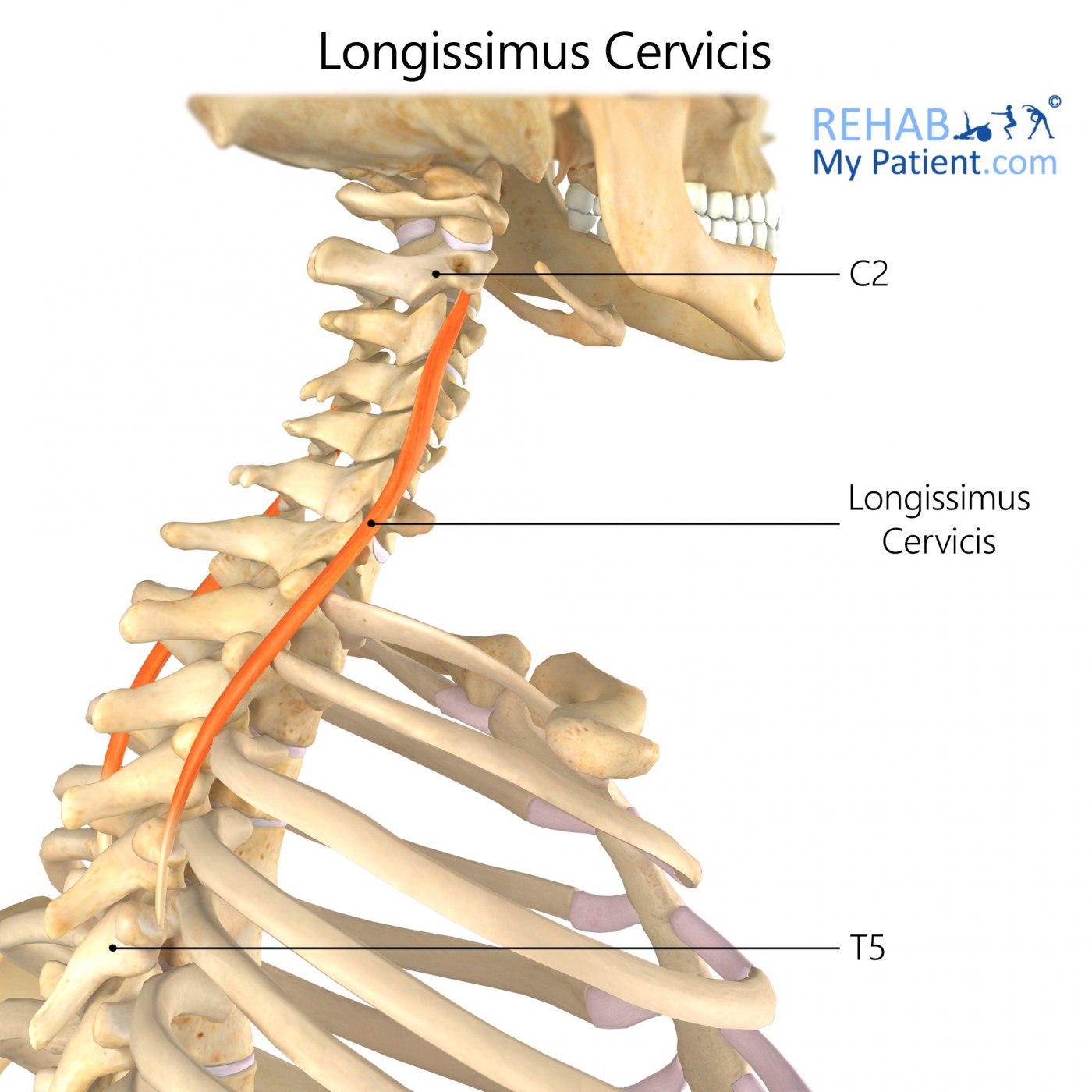This comprehensive guide explores the longissimus capitis muscle, a crucial yet often overlooked component of neck function. We’ll delve into its anatomy, explore its role in head movement, and discuss the clinical implications of its dysfunction. Whether you’re a healthcare professional or someone experiencing neck pain, this guide will offer valuable insights.
Understanding the Longissimus Capitis: Location and Structure
The longissimus capitis is a deep muscle located in the back of the neck, belonging to the erector spinae muscle group. It’s situated between the iliocostalis and spinalis muscles, originating from the transverse processes of the thoracic vertebrae (T1-T5) and the articular processes of the cervical vertebrae (C4-C7). From these origins, it ascends to insert into the mastoid process of the temporal bone, a bony prominence behind the ear. For a detailed visualization of its location and attachments, explore resources like Visible Body Muscle Premium. [https://www.lolaapp.com/ischiopubic-ramus]
A Closer Look at Anatomy: Origin, Insertion, and Innervation
- Origin: Transverse processes of T1-T5 and articular processes of C4-C7.
- Insertion: Mastoid process of the temporal bone.
- Innervation: Dorsal rami of cervical spinal nerves.
- Blood Supply: Branches of the occipital and deep cervical arteries.
The longissimus capitis is the smallest of the three longissimus muscles (thoracis, cervicis, and capitis). It lies deep within the neck, adjacent to the longissimus cervicis, and somewhat overshadowed by the more superficial splenius capitis and cervicis muscles.
The Role of Longissimus Capitis: Head Movement and Stability
The longissimus capitis may be small, but it plays a significant role in head and neck movement:
- Extension: Looking upwards.
- Lateral Flexion (Ipsilateral): Bending the head to the same side as the muscle.
- Rotation (Ipsilateral): Turning the head to the same side as the muscle.
Beyond these movements, the longissimus capitis is essential for maintaining posture, constantly working to keep the head upright against gravity.
Longissimus Capitis in Action: Understanding Its Function
Working in concert with other neck muscles like the splenius capitis and semispinalis capitis, the longissimus capitis orchestrates complex head movements. This interplay emphasizes the importance of considering the entire muscle system when diagnosing and treating neck pain. [https://www.lolaapp.com/enharmonic-equivalent]
Clinical Implications: Pain, Dysfunction, and Treatment
Like any muscle, the longissimus capitis is susceptible to injury and strain. Common causes include whiplash, poor posture (especially “forward head posture”), overuse, repetitive movements, and trauma. Some experts believe that even minor trauma or everyday wear and tear can accumulate over time, leading to dysfunction.
Recognizing the Symptoms: When Longissimus Capitis is Troubled
Symptoms of longissimus capitis dysfunction may include:
- Neck pain and stiffness: Often localized to the base of the skull, sometimes radiating to the head, behind the ear, or even behind the eye.
- Headaches: Tension headaches are a frequent symptom.
- Limited range of motion: Difficulty turning or tilting the head.
- Trigger points: Sensitive knots within the muscle can refer pain to other areas.
- Muscle spasms: In some cases, the muscle may spasm, causing sudden, sharp pain.
In rarer instances, conditions like cervical dystonia, a neurological disorder, can affect the longissimus capitis, causing involuntary muscle contractions and jerky head movements.
Managing Longissimus Capitis Pain: Treatment and Strategies
Treatment typically involves a multi-pronged approach:
- Physical Therapy: Targeted exercises improve strength, flexibility, and range of motion.
- Massage Therapy: Releases muscle tension and trigger points.
- Postural Correction: Addressing underlying postural issues through ergonomic adjustments and exercises.
- Pain Management: Over-the-counter or prescription medications (pain relievers, muscle relaxants) can provide relief. In severe cases, corticosteroid injections may be considered.
- Self-care: Gentle self-massage, stretching, and isometric exercises can help manage pain and improve function.
| Treatment Approach | Description |
|---|---|
| Physical Therapy | Exercises to restore strength, flexibility, and range of motion |
| Massage Therapy | Manual techniques to release tension and trigger points |
| Postural Correction | Ergonomic changes and exercises to improve posture |
| Pain Management | Medications and other modalities to relieve pain |
| Self-Care | Self-massage, stretching, and isometric exercises |
Prevention is Better Than Cure: Proactive Steps for Neck Health
Preventing longissimus capitis issues is often more effective than treating them. Key preventive measures include:
- Maintaining good posture: Pay attention to ergonomics, especially at your workstation.
- Regular stretching: Gentle neck stretches can help keep the muscle flexible.
- Taking breaks: Frequent breaks from repetitive movements or prolonged static postures.
- Stress management: Stress can contribute to muscle tension, so relaxation techniques can be helpful.
The Future of Longissimus Capitis Research
Research into neck pain and muscle function is ongoing. While current evidence supports the effectiveness of the treatments and preventive measures discussed, there’s still much to learn. Future research may explore personalized approaches based on individual anatomy and underlying conditions. It’s always advisable to consult with a healthcare professional for an accurate diagnosis and a treatment plan tailored to your specific needs.
- Unlocking 2-Letter Words with U: The Definitive Guide - April 4, 2025
- Unlock Words with the Letters THREE: Top Unscramble Tools 2025 - April 4, 2025
- Master Scrabble: X & Z Words for High Scores - April 4, 2025
















